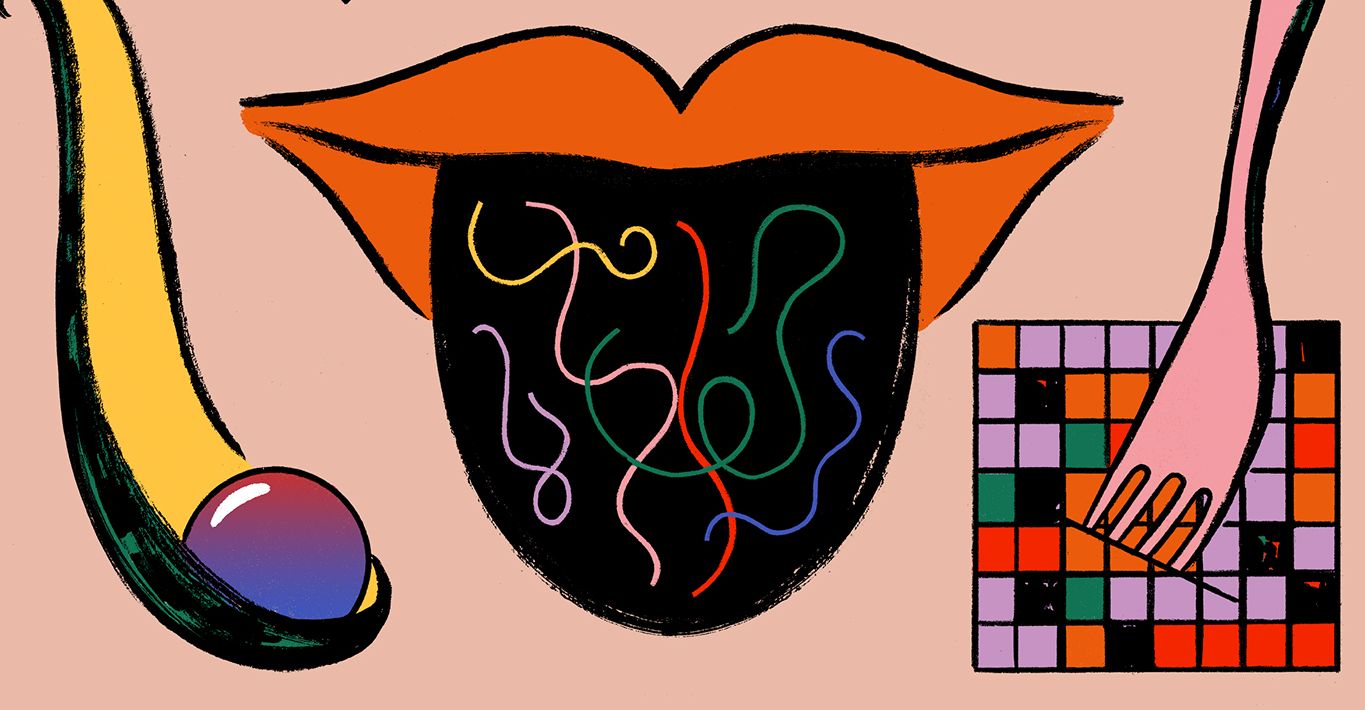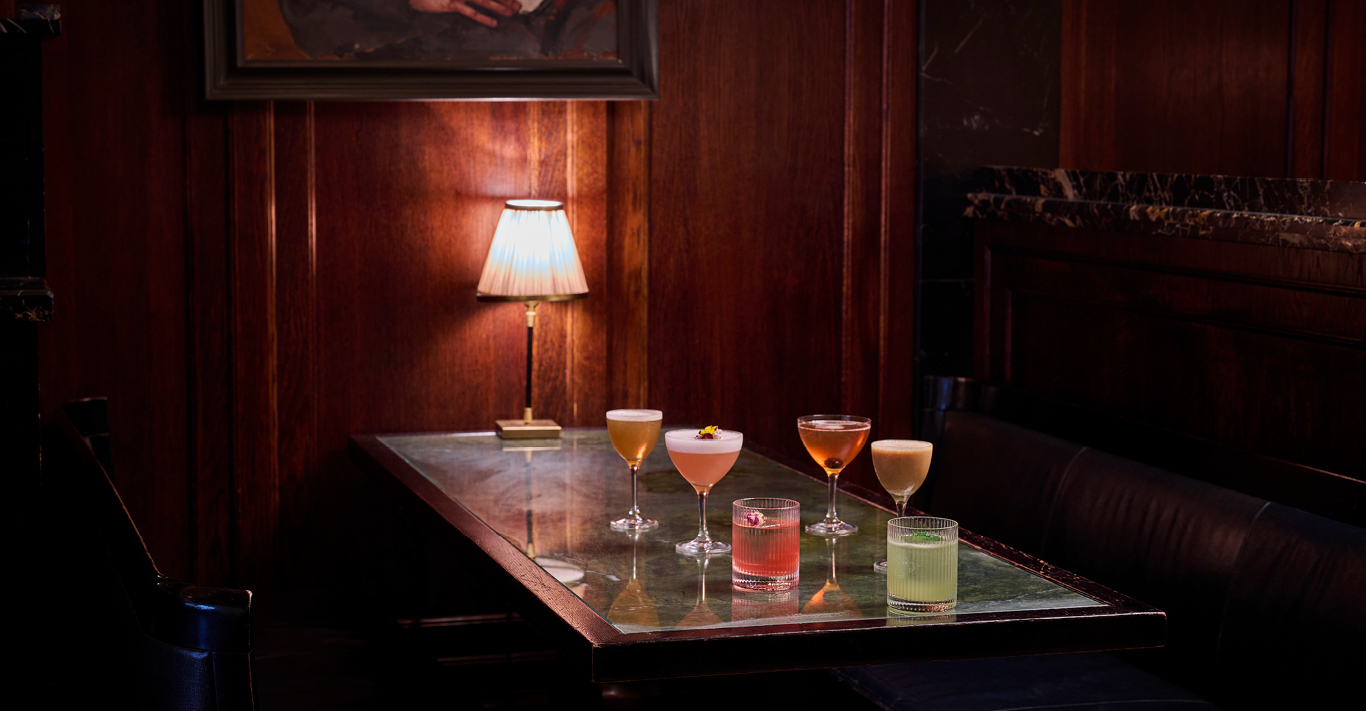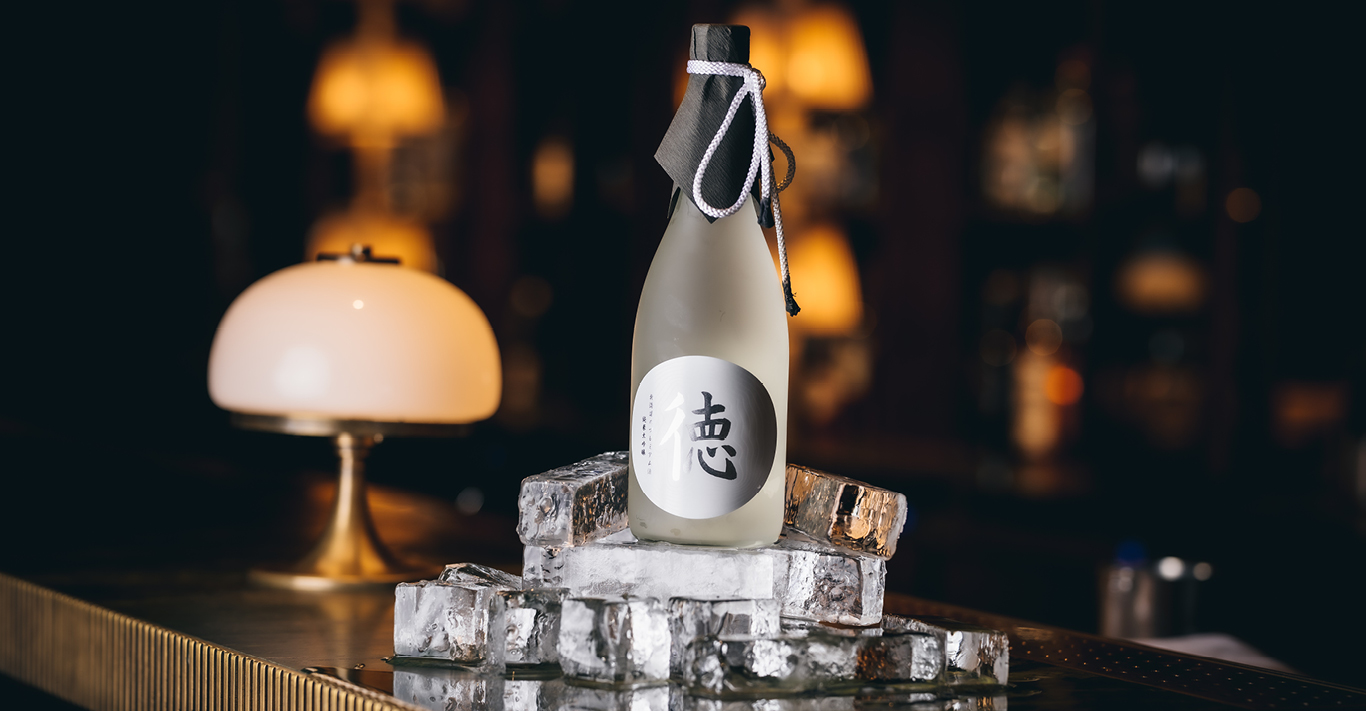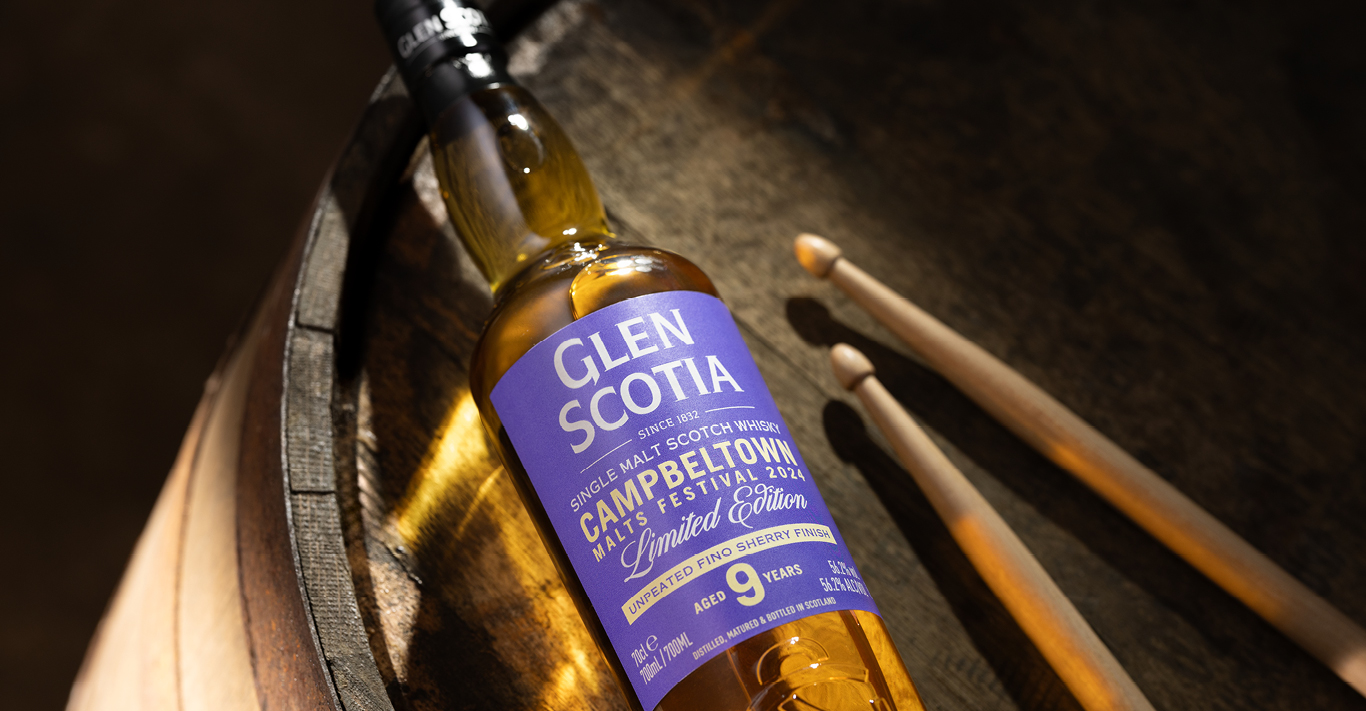WORDS
Gemma Latham
ILLUSTRATION
Cynthia Kittler
Forget molecular gastronomy: multisensory flavour perception is the new term that restaurants keen to keep ahead of the curve should be taking note of. Heralded by head chef and founder of Kitchen Theory, Jozef Youssef, and Oxford University’s head of crossmodal research, professor Charles Spence, the science behind this new dining concept is called gastrophysics and is based on research into what creates the flavours we experience when we eat and drink.
It turns out we are influenced by far more than just taste and smell. Spence’s research demonstrates that our perception of flavour is determined by a combination of multiple sensory observations made before and during eating that affect our expectations about the food in front of us. Everything, from what we can hear and the weight of the cutlery to the way food is arranged on the plate, has an impact on ‘taste’, and the end result is a sensation generated by all of our senses combined. ‘Basically, it all boils down to one idea: we don’t perceive flavour in the mouth, we perceive flavour in the brain,’ explains Youssef.
Youssef and Spence met in 2011 when, as a young chef climbing the ranks of London’s top restaurants including The Dorchester and Helèné Darroze at The Connaught, Youssef attended Spence’s talk on multisensory flavour perception. ‘I couldn’t believe more people in my industry weren’t talking about it and making it a focus point in their work,’ says Youssef.
Spence’s first foray into flavour was with his ‘sonic chip’ research published in 2004 – an experiment with potato crisps that proved an association between sound and flavour (participants perceived crisps with a louder crunch as tasting fresher). ‘It was the first time a psychology paradigm had been applied to food,’ says Spence, who spent many years collaborating with celebrity chef-scientist, Heston Blumenthal. Inspired by their work together, Blumenthal and his team created The Fat Duck’s ‘Sound of the Sea’ – a seafood dish, served with an iPod so diners can listen to a flavour-enhancing soundscape of breaking waves while they eat.
“I couldn’t believe more people in my industry weren’t talking about multisensory flavour perception and making it a focus point in their work
Youssef started Kitchen Theory as a blog, to share knowledge about gastronomy and modernist cooking techniques. Then in 2013, after attending the Ferran Adrià and The Art of Food exhibition at Somerset House, Youssef felt it was time to launch his own dining experience. ‘I was so fascinated by the exhibition,’ he says. ‘It brought a need to create, so we started doing pop-up dining experiences.’
Youssef and his partner Lulu Razzaq, Kitchen Theory’s MD, started with a weekly residency at The House of Wolf in Highbury, before finding a more frequent home in Westbourne Park for a couple of years. With Spence on board as consulting director, the Kitchen Theory team began to host dining events conveying cultural, artistic and scientific concepts through the medium of food. One of the most popular menus explored the phenomenon of synaesthesia – a condition where two or more of the senses normally experienced separately are automatically combined. For example, the sound of musical notes could trigger the visualisation of different colours, or colours may be associated with certain smells.
One of the dishes from this menu, ‘4 Tastes – The taste of colour’, features four edible bubbles in red, white, black and green, which diners are asked to identify as sweet, sour, salty or bitter before tasting. Without giving anything away, 70 per cent of participants agree on which colour correlates with which flavour, showing that there are widely held preconceptions about the relationship between the two.
Another dish, ‘Bouba & Kiki’, explores the associations between sound, shape and flavour. Research by psychologist Wolfgang Köhler, published in 1929, showed that people associate the word “bouba” with round shapes and “kiki” with more angular ones. ‘Interest in this study has been reinvigorated this century with people questioning whether matching sounds to shapes may be a synaesthesia that we all have,’ explains Spence. ‘In 2007, we did the first research applying the Bouba and Kiki effect to food. We showed that people find some flavours are more bouba, and others are more kiki. It showed that as well as associating taste with colours, we also associate them with shapes. We think of sweet things as round, and bitter and salty things as angular.’
Both of these dishes have graduated to Kitchen Theory’s current dining experience, Gastrophysics Chef ’s Table – a 13-course journey exploring how colour, aroma, texture and sound influence our experience of flavour. The event runs for one weekend a month at Kitchen Theory’s studio space in High Barnet.
Over an evening, guests are guided through a delicious dinner that provides a fascinating insight into the science of gastrophysics and multisensory flavour perception.
‘The whole point of the evening is to focus all of your senses on each of the 13 courses, so we have to make sure the food is as good as it can be,’ says Youssef. ‘We are constantly trying to make our guests more mindful of the food as well as feeling enlightened, but also to leave feeling satiated and that they’ve had a great meal.’
kitchen-theory.com





